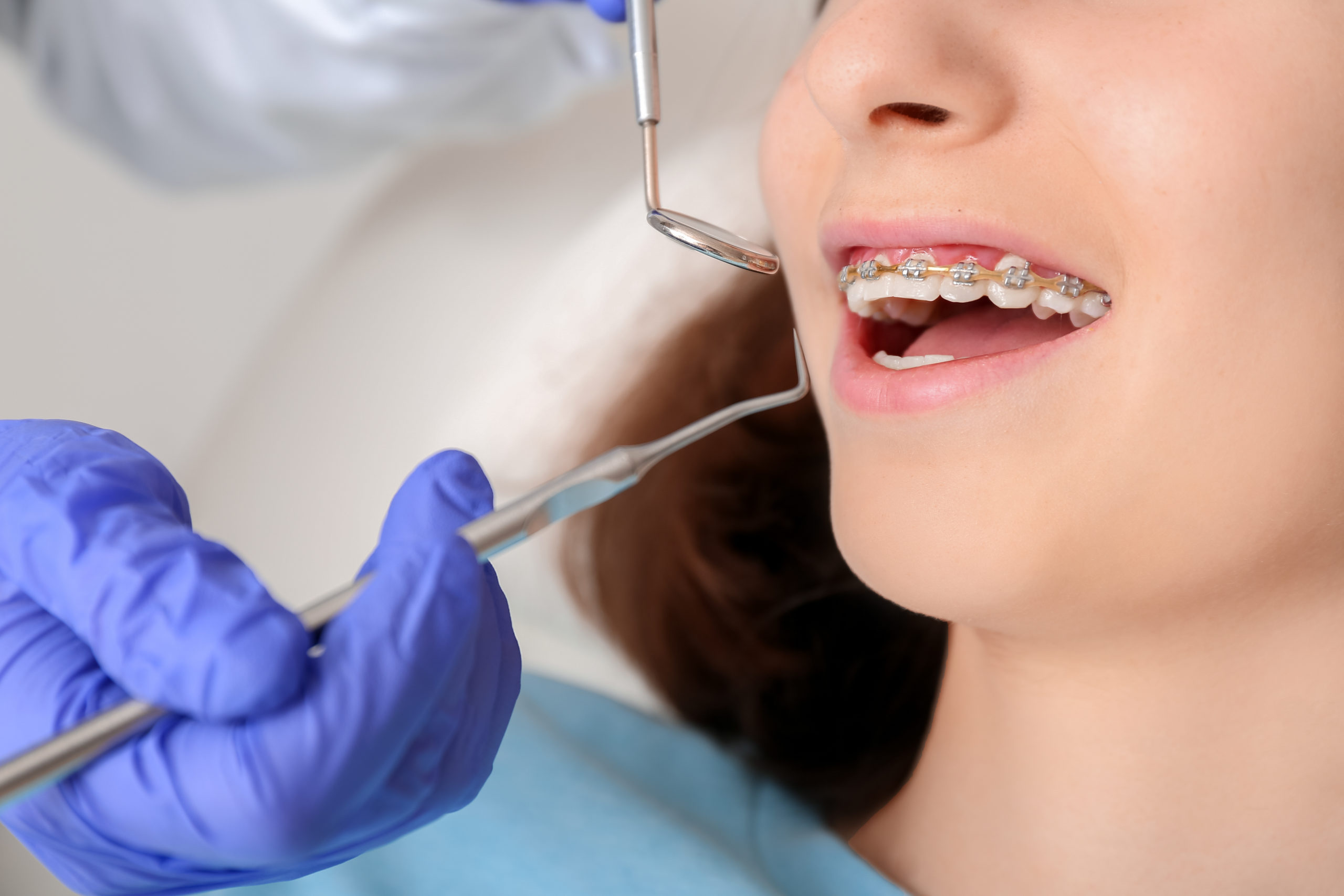Comprehensive Guide to Orthodontics Treatments for Fixing Oral Misalignments
Recognizing the intricacies of each procedure, including their systems, benefits, and possible drawbacks, is essential in making notified choices concerning one's orthodontic therapy. As we navigate with the thorough overview to orthodontic treatments for correcting dental misalignments, the complex information of each approach will certainly unfold, shedding light on the path toward a harmonious and functional dental positioning.
Orthodontic Procedures Introduction

In addition to traditional dental braces and clear aligners, orthodontists may also advise various other interventions like headgear, palatal expanders, or retainers to address specific placement problems (braces). These treatments are tailored to each person's distinct demands and might include a mix of treatments to achieve the wanted results. Normal modifications and tracking are essential components of orthodontic treatment to ensure progression is on track and to make any kind of essential alterations along the road. By undertaking orthodontic procedures, patients can not just achieve a straighter grin but likewise improve their general oral health and wellness and function.
Typical Braces: Just How They Work
When taking into consideration orthodontic therapies for dental imbalances, standard braces stand out as a time-tested approach for fixing teeth positioning. Typical braces consist of braces, wires, and bands that function together to use constant pressure on the teeth, progressively moving them right into the preferred alignment.
As pressure is used to the teeth via the braces, the bone bordering the teeth is improved to support the new tooth placements. Clients will certainly require regular modifications at the orthodontist's workplace to ensure the braces proceed to apply the appropriate stress for reliable teeth movement.
Unnoticeable Aligners: Disadvantages and pros
These clear, custom-made trays are virtually invisible when put on, making them an enticing choice for individuals looking for a more visually pleasing orthodontic treatment. Clients can remove the aligners before eating or brushing their teeth, minimizing the danger of food getting stuck in the appliance and streamlining the cleansing procedure.

Surgical Orthodontic Options
Surgical treatments in orthodontics present feasible alternatives for dealing with intricate dental misalignments that might not be efficiently settled through traditional orthodontic therapies. While invisible aligners and conventional dental braces can correct lots of orthodontic concerns, particular cases require surgical treatment to attain optimum outcomes. Surgical orthodontic options are usually recommended for orthodontist extreme malocclusions, considerable jaw discrepancies, and cases where the underlying bone structure needs adjustment to accomplish appropriate positioning.
One usual medical orthodontic treatment is orthognathic surgery, which entails rearranging the jaws to deal with functional issues such as difficulty chewing or speaking. This surgical procedure is often performed in collaboration with an orthodontist who helps straighten the teeth prior to and after the treatment. Surgical orthodontics might likewise include procedures to expose impacted teeth, get rid of excess periodontal cells, or reshape the jawbone to create a more harmonious face account.
Prior to thinking about surgical orthodontic options, people undertake a detailed examination to identify the necessity and potential advantages of such treatments. orthodontist. While surgical procedure might seem challenging, it can significantly boost both the feature and aesthetic appeals of the smile in cases where standard orthodontic therapies fall short
Retainers and Post-Treatment Treatment

Post-treatment treatment involves complying with the orthodontist's instructions faithfully. This may consist of proper oral health methods, attending follow-up visits, and wearing the retainers as recommended. Failing to conform with post-treatment treatment instructions can cause relapse, where the teeth gradually relocate back in the direction of their original placements. Consistent retainer wear, great oral health, and normal dental examinations are important for preserving the outcomes achieved with orthodontic surgical procedure and guaranteeing the lasting stability of the fixed dental placement.
Conclusion
In final thought, orthodontic treatments supply numerous alternatives for correcting dental misalignments. Standard dental braces utilize steel braces and cables to move teeth right into correct placement. Unseen aligners give an even more very discreet choice yet might not be ideal for all instances. Surgical orthodontic alternatives are readily available for extra extreme imbalances. Retainers are frequently made use of post-treatment to keep the new positioning. Generally, orthodontic treatments can successfully enhance dental health and aesthetic look.
As we navigate via the thorough guide to orthodontic procedures for dealing with oral misalignments, the intricate information of each technique will unravel, shedding light on the course toward a harmonious and useful oral positioning. - cumming invisalign
One of the most typical orthodontic treatments is the usage of braces, which are composed of metal braces and wires that use gentle stress to gradually change teeth into the wanted position.When taking into consideration orthodontic treatments for oral misalignments, typical braces stand out as a reliable method for dealing with teeth positioning. In addition, unnoticeable aligners might not be suitable for complicated orthodontic concerns that need even more significant teeth motion, as they are typically advised for mild to modest cases. Retainers are tailor-made orthodontic devices developed to hold teeth in their dealt with positions after the completion of orthodontic therapy.
Comments on “How Cumming Orthodontics Can Change Your Smile with Invisalign and Braces”